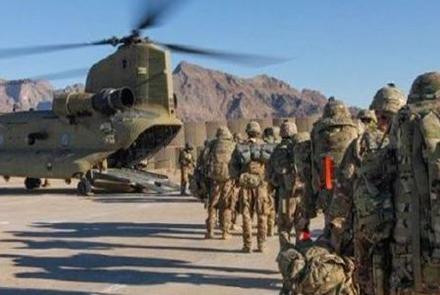The United States announced the deployment of additional American military forces to Saudi Arabia on Friday to bolster the kingdom’s defenses after the Sept. 14 attack on its oil facilities, which Washington and Riyadh have blamed on Iran.
The large deployment, which was first reported by Reuters, includes fighter squadrons, an air expeditionary wing and air defense personnel, the Pentagon said. Together with the 200 forces to Saudi Arabia announced last month, the deployment totaled about 3,000 troops, it said.
US-Iran tensions have risen to new highs since May 2018, when the Trump administration withdrew from a 2015 international nuclear accord with Tehran that put limits on its nuclear program in exchange for the easing of sanctions.
As Trump reinstated US sanctions, increasing pressure on the Iranian economy, there have been a series of attacks that Washington and close allies have blamed on Iran, including the attack on the world’s biggest crude oil-processing facility. Iran denies responsibility.
In a bid to better shield Saudi Arabia, the Pentagon said it was sending two additional Patriot batteries and one Terminal High Altitude Area Defense system (THAAD).
US Defense Secretary Mark Esper told reporters the deployments were designed to deter Iran.
“We thought it was important to continue to deploy forces to deter and defend and to send the message to the Iranians: Do not strike another sovereign state, do not threaten American interests, American forces, or we will respond,” Esper told reporters during a press briefing.
Trump said the United States would not bear the expense of the deployment. “Saudi Arabia, at my request, has agreed to pay us for everything we’re doing,” he told reporters.
Some of Trump’s Republican allies have called for retaliatory strikes, which the president has so far declined to carry out.
It was unclear whether some of the newly announced troops might replace other American forces expected to depart the region in the coming weeks or months.
The Pentagon has yet to announce, for example, whether it will replace the aircraft carrier USS Abraham Lincoln and its strike group when it eventually wraps up its deployment to the Middle East.
Esper declined to say whether the carrier, which itself includes thousands of troops and massive firepower, would be replaced.
The deployment is part of a series of what the United States has described as defensive moves following the attack on Saudi Arabia’s oil facilities last month, which rattled global energy markets and exposed major gaps in Saudi Arabia’s air defenses.
Iran has responded to previous US troop deployments this year with apprehension. It denies responsibility for the attack on Saudi Arabia as well as attacks on oil tankers earlier this year.
The additional deployment comes as many members of Congress have questioned the longstanding US-Saudi security alliance and backed several efforts - which have failed so far - to stop Trump from selling arms to the kingdom without congressional approval or providing support to the Saudi-led military coalition fighting in Yemen.
Criticism of close US-Saudi ties under Trump increased last year after the killing of journalist Jamal Khashoggi. Eleven Saudi officials are on trial in Riyadh for the murder, which took place inside the Saudi consulate in Istanbul.

